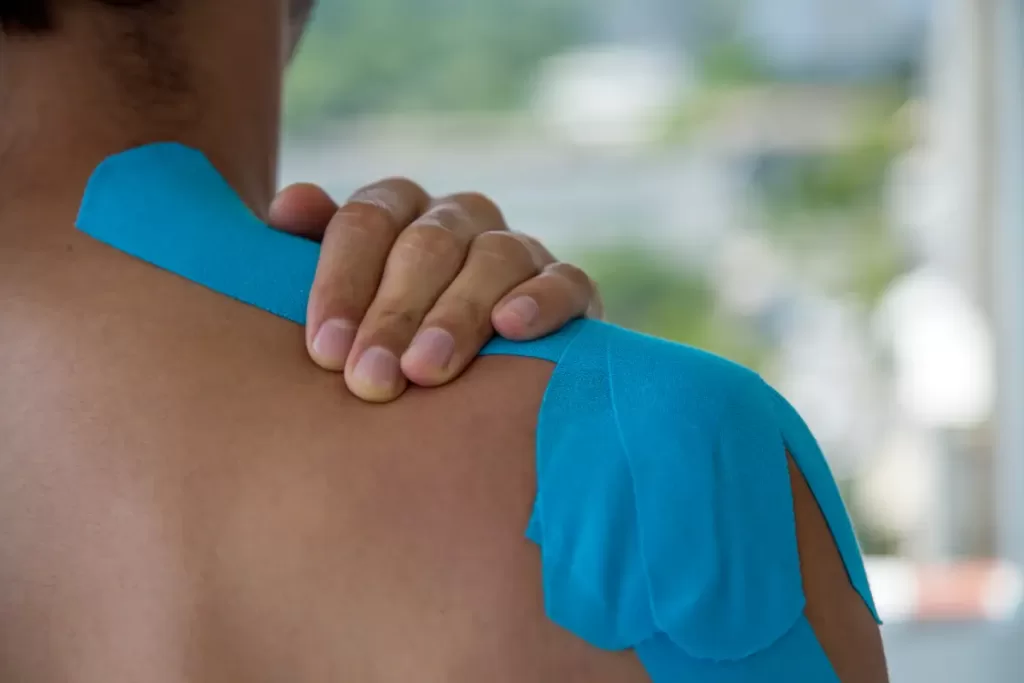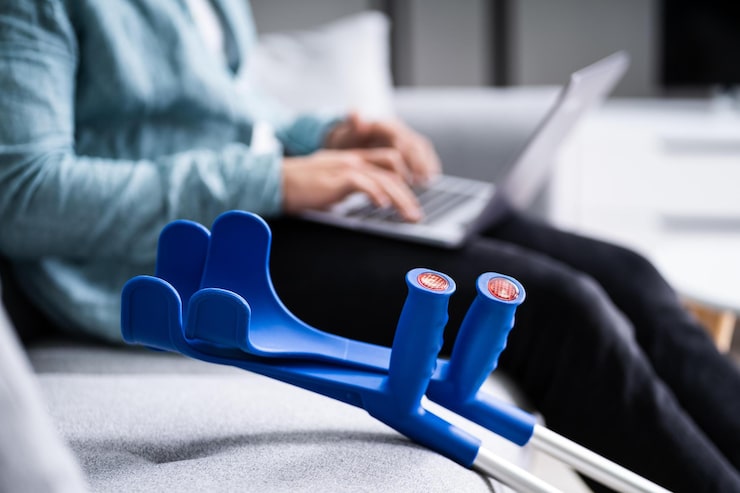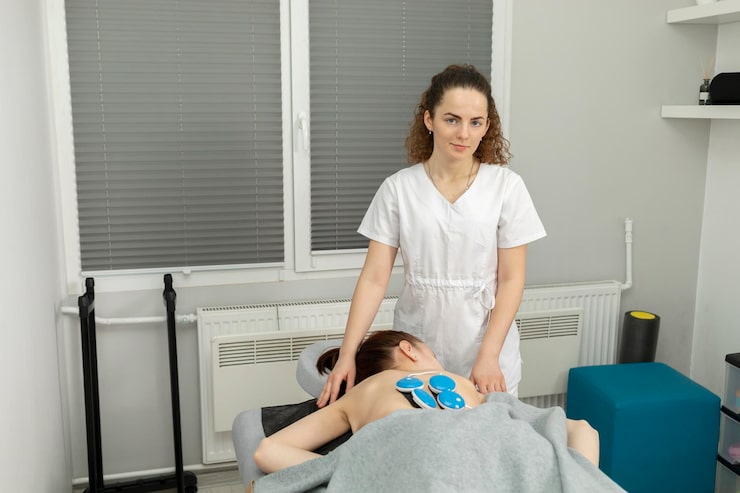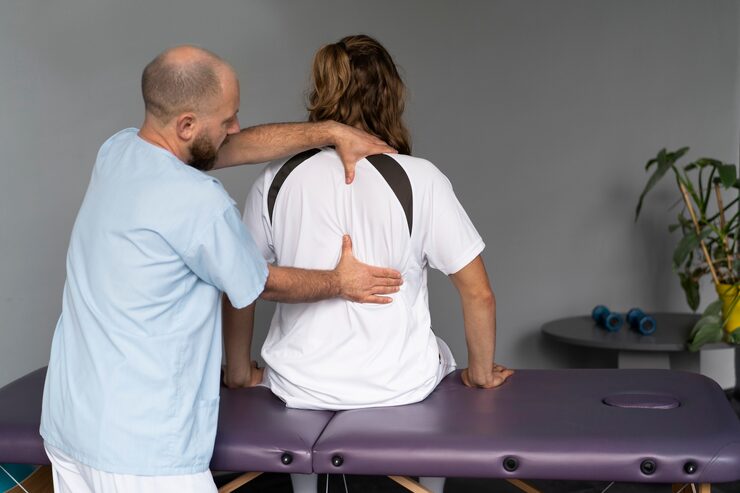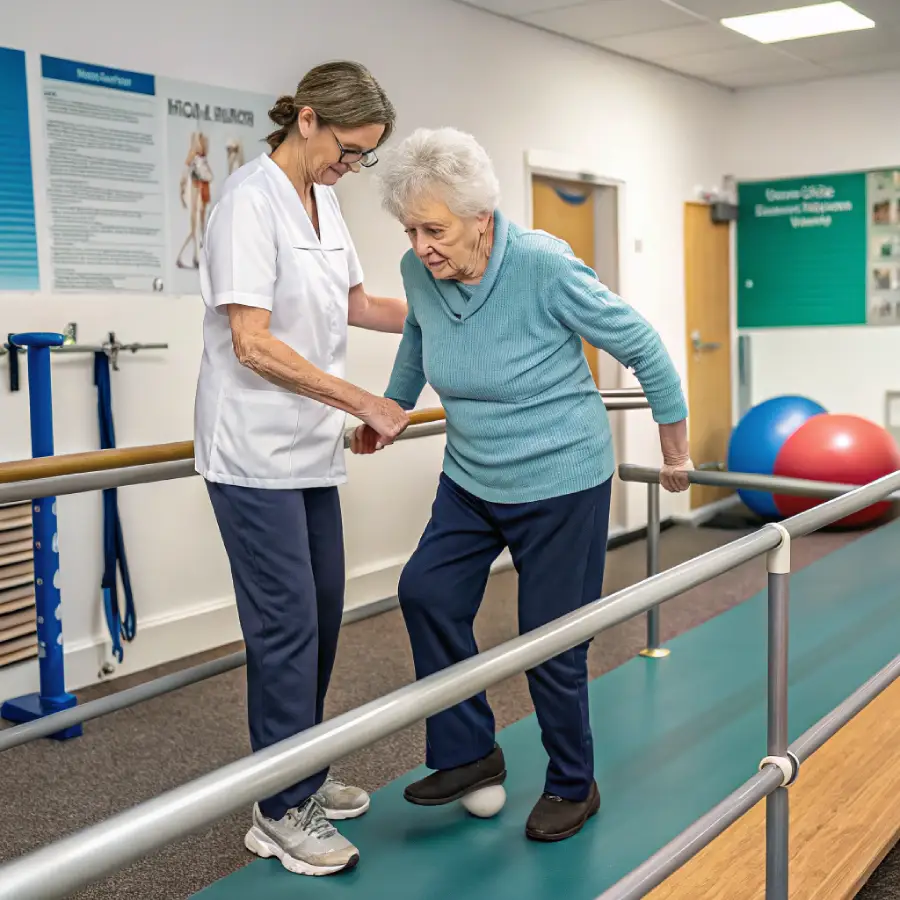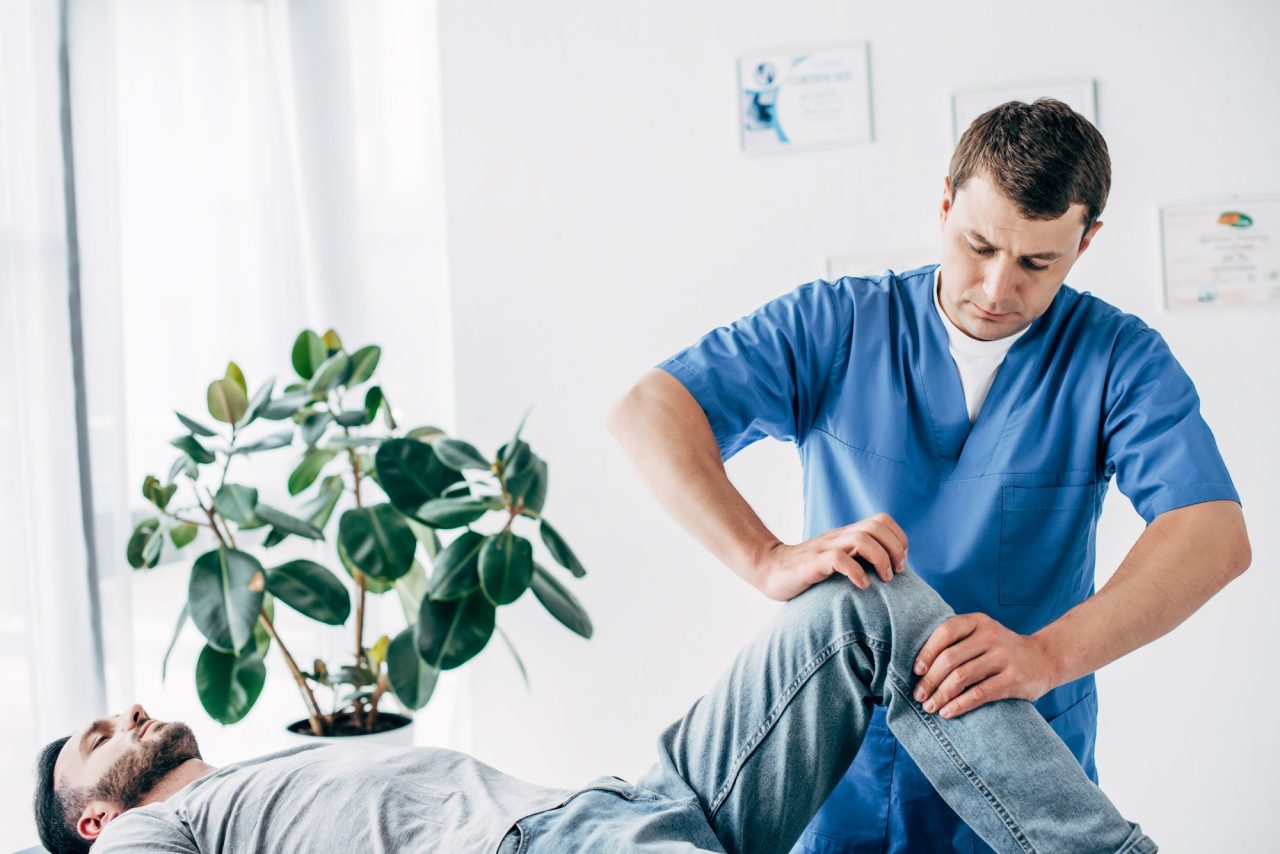Living with a frozen shoulder can be incredibly challenging. Everyday activities like reaching for something on a shelf, getting dressed, or even simply moving your arm can become painful tasks. Known medically as adhesive capsulitis, frozen shoulder causes stiffness and discomfort, significantly impacting quality of life. While traditional treatments exist, massage therapy has emerged as a popular, non-invasive option for those seeking relief. But does it truly work? Here, we’ll dive into the benefits of massage therapy for frozen shoulders, the best techniques, and what to expect.
What is a Frozen Shoulder? Understanding the Condition
Frozen shoulder is a condition where the shoulder joint becomes stiff and painful and loses its normal range of motion. It generally develops over time and goes through three distinct stages:
- Freezing Stage: Pain begins and gradually worsens. Movements become more limited.
- Frozen Stage: Stiffness sets in, and movement becomes severely restricted.
- Thawing Stage: The pain may start to improve, and the range of motion slowly returns.
Frozen shoulders can last months or even years, with each stage presenting unique challenges. It’s essential to understand the condition to find effective treatment options like massage therapy that address each stage’s specific needs.
What Causes Frozen Shoulder? Common Risk Factors
A clear injury or trauma doesn’t always cause a frozen shoulder. Here are some common contributing factors:
- Injury or Overuse: Repetitive movements or injuries can strain the shoulder, leading to inflammation.
- Medical Conditions: Diabetes, heart disease, and thyroid disorders can increase the risk.
- Immobility After Surgery or Injury: Long periods of inactivity, especially after an injury, can contribute to a frozen shoulder.
Knowing these risk factors can help prevent a frozen shoulder, especially if massage therapy is incorporated early to maintain shoulder mobility and reduce stiffness.
How Massage Therapy Helps Frozen Shoulder
Massage therapy is a popular complementary treatment for frozen shoulder, offering relief from pain and stiffness. By targeting muscles, connective tissues, and circulation, it addresses the condition’s core symptoms. Here’s how it works:
1. Improves Blood Flow
Massage enhances circulation, delivering oxygen and nutrients to the shoulder’s tissues. Improved blood flow reduces inflammation and supports healing, particularly in the freezing and frozen stages. Scarborough therapists use techniques to stimulate circulation, aiding recovery.
2. Reduces Stiffness
Tight muscles and connective tissues contribute to frozen shoulder’s immobility. Massage loosens these tissues, improving flexibility and range of motion. Regular sessions can help break the cycle of stiffness, making daily movements easier.
3. Relieves Pain
Massage promotes the release of endorphins, the body’s natural painkillers, reducing discomfort. By relaxing tense muscles around the shoulder, it alleviates pressure on the joint. Scarborough clinics often see patients report less pain after just a few sessions.
4. Promotes Relaxation
Chronic pain and limited mobility can increase stress and tension. Massage therapy reduces stress hormones like cortisol, fostering relaxation. This mental relief makes it easier to cope with the challenges of frozen shoulder, enhancing overall well-being.
5. Supports Scar Tissue Breakdown
In the frozen stage, scar tissue may form in the shoulder capsule. Massage techniques can help break down this tissue, improving mobility. Scarborough practitioners use targeted methods to address scar tissue without causing discomfort.
Types of Massage Therapy Techniques for Frozen Shoulder Relief
Not all massage techniques are equally effective for frozen shoulder. Scarborough therapists select methods based on the condition’s stage and your symptoms. Here are the most effective approaches:
Deep Tissue Massage
This technique targets deeper muscle layers and connective tissues to release chronic tension. It’s particularly effective in the frozen stage for breaking up scar tissue and improving mobility. Therapists apply firm pressure, adjusting to your comfort level.
Myofascial Release
Myofascial release focuses on the fascia, the connective tissue surrounding muscles. By applying sustained pressure to tight areas, it relieves restrictions, enhancing shoulder movement. This gentle technique is ideal for all stages, especially when stiffness is severe.
Trigger Point Therapy
Trigger points—knots or spasms in muscles—can exacerbate pain. This therapy involves applying pressure to these points to release tension, often providing immediate relief. It’s effective for targeting specific areas of discomfort in the shoulder.
Swedish Massage
Swedish massage uses long, gliding strokes to relax muscles and reduce tension. While less intense, it’s beneficial in the freezing stage when pain is prominent, helping to ease discomfort and prepare the shoulder for deeper work.
Neuromuscular Therapy
This technique addresses muscle imbalances and nerve compression, common in frozen shoulder. By targeting specific muscle groups, it restores function and reduces pain, making it a valuable option for Scarborough patients.
What to Expect During a Massage Therapy Session for Frozen Shoulder
Starting massage therapy for frozen shoulder can feel unfamiliar, but Scarborough clinics ensure a supportive experience. Here’s what a typical session involves:
Initial Consultation
Your therapist will:
-
Discuss your symptoms, medical history, and stage of frozen shoulder.
-
Assess your range of motion and pain levels through gentle tests.
-
Create a personalized treatment plan based on your needs.
This consultation ensures therapy is tailored to your condition, maximizing effectiveness.
Treatment Process
-
Preparation: You’ll sit or lie comfortably, with the shoulder accessible. The therapist may use oils or lotions to reduce friction.
-
Massage Application: Techniques like deep tissue or myofascial release are applied, starting gently and increasing intensity as tolerated.
-
Duration: Sessions typically last 30–60 minutes, focusing on the shoulder and surrounding areas like the neck or upper back.
-
Post-Session: You may feel relaxed or notice improved mobility. Some soreness is normal but should subside within a day.
Scarborough therapists provide guidance on what to expect, ensuring you feel confident and informed.
Frequency of Sessions
The number of sessions depends on your condition:
-
Freezing Stage: 1–2 sessions per week to manage pain and prevent worsening stiffness.
-
Frozen Stage: 2–3 sessions per week to improve mobility and break down scar tissue.
-
Thawing Stage: 1 session per week to support recovery and maintain progress.
Scarborough clinics adjust schedules based on your progress, ensuring optimal results.
Combining Massage with Other Treatments for Best Results
Massage therapy is most effective when part of a comprehensive treatment plan. Combining it with other therapies enhances outcomes. Here are complementary approaches:
Physical Therapy
Physical therapists design exercises to restore shoulder movement and strength. Combining these with massage therapy accelerates recovery by addressing both stiffness and muscle weakness. Scarborough clinics often integrate both for a holistic approach.
Heat and Cold Therapy
-
Heat Therapy: Applying heat before massage relaxes muscles, making them more receptive to treatment.
-
Cold Therapy: Ice packs post-session reduce inflammation, especially in the freezing stage.
Scarborough therapists may recommend alternating heat and cold to maximize benefits.
Stretching and Strengthening Exercises
Gentle stretches maintain flexibility, while strengthening exercises rebuild muscle support around the shoulder. Therapists provide home exercises to complement massage, ensuring long-term mobility.
Hydrotherapy
Water-based therapy, like warm pool exercises, reduces joint stress while improving movement. Some Scarborough clinics offer hydrotherapy alongside massage for enhanced relief.
Corticosteroid Injections
For severe pain in the freezing stage, injections may reduce inflammation. Massage therapy can complement this by maintaining mobility post-injection, as advised by your healthcare provider.
How Long Does it Take to See Results?
Recovery from a frozen shoulder varies widely based on the individual and the severity of the condition. Many patients report noticeable improvements in pain and mobility within a few weeks of consistent massage therapy. However, it may take several months to recover fully. Setting realistic expectations and following through with regular therapy sessions is crucial.
Self-Care Tips to Manage Frozen Shoulder at Home
In addition to massage therapy, certain self-care practices can help you manage a frozen shoulder at home:
- Gentle Stretching: Try simple stretches recommended by your therapist to keep the shoulder from tightening up.
- Ice and Heat Packs: Apply ice packs to reduce inflammation or heat packs to relax the muscles, depending on your pain level.
- Maintain Good Posture: Proper posture can alleviate unnecessary strain on the shoulder joint.
- Stay Active: Light activity like walking can improve circulation and help reduce stiffness.
Incorporating these habits can enhance the benefits of massage therapy and help you regain a full range of motion more quickly.
Sum Up
Massage therapy can be a valuable tool in managing a frozen shoulder, offering pain relief, improved mobility, and greater relaxation. While it’s not a cure, massage therapy can significantly improve quality of life when combined with other treatments. If you’re ready to take the next step toward recovery, consult a licensed massage therapist experienced in treating frozen shoulders. With the right approach, relief and increased movement can be within reach.
If you need massage therapy in Scarborough, we at Physio Cottage are here to help. Our experienced therapists are dedicated to providing personalized care to help you find relief and improve mobility. Contact us today to book your session and start your journey to recovery.
FAQs About Massage Therapy for Frozen Shoulder in Scarborough
Here are answers to common questions, incorporating terms like physical therapy Scarborough and Scarborough physiotherapy clinics:
Is Massage Therapy Painful for Frozen Shoulder?
Some discomfort may occur, especially in the freezing stage, but skilled therapists adjust pressure to your tolerance. Scarborough clinics prioritize comfort during sessions.
How Many Sessions Are Needed?
Pain relief may begin after 2–4 sessions, with mobility improvements after 6–12 sessions, depending on the stage. Scarborough therapists tailor plans to your progress.
Can Massage Therapy Cure Frozen Shoulder?
Massage therapy alleviates symptoms and speeds recovery but isn’t a cure. Combined with physical therapy, it significantly improves outcomes.
Is Massage Therapy Covered by Insurance?
Many Ontario plans cover massage therapy by registered therapists. Check with your provider and confirm with your Scarborough clinic for billing details.
Can I Combine Massage with Other Treatments?
Yes, combining massage with physical therapy, heat/cold therapy, or exercises enhances results. Scarborough clinics often integrate these for comprehensive care.
What Should I Do After a Session?
Follow your therapist’s advice, such as performing stretches or applying heat/ice, to maintain progress. Avoid strenuous activities immediately post-session.

